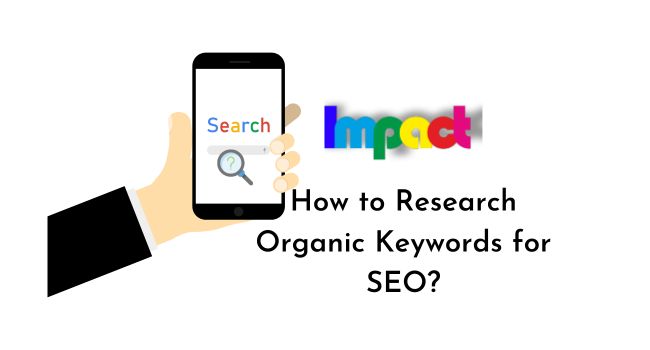Keyword research has been the cornerstone of SEO for a long time. It involves finding and analyzing the words and phrases that users enter into search engines, and using that data to optimize websites for better rankings and traffic.
But keyword research is not as effective as it used to be. Search engines have evolved, and so have users. They are no longer looking for exact matches of keywords, but rather for relevant and comprehensive answers to their questions and problems.
That’s why keyword research is dead, and audience research is the future of SEO.
Audience research is the process of understanding who your target audience is, what they want, what they need, and how they search for it. It goes beyond keywords and focuses on topics, intents, pain points, and solutions.
Audience research helps you create content that is not only optimized for search engines, but also for users. It helps you align your content with your audience’s goals and expectations, and provide them with value and satisfaction.
In this article, I will explain why audience research is more important than keyword research, how to conduct audience research for SEO, and how to use it to create better content and improve your rankings.
Table of Contents

Why Audience Research is More Important than Keyword Research?
Keyword research has several limitations that make it less effective for SEO in the current scenario. Here are some of them:
- Keyword research is based on search volume and keyword difficulty, which are not always accurate or reliable indicators of user demand or competition.
- Keyword research does not account for the context, intent, or semantics of user queries, which can vary depending on the user’s location, device, language, or situation.
- Keyword research does not capture the user journey or the stages of the buyer funnel, which can influence the type and format of content that users are looking for.
- Keyword research does not help you understand the problems, needs, or emotions of your audience, which are essential for creating engaging and persuasive content.
- Keyword research does not help you differentiate yourself from your competitors, who are likely targeting the same keywords as you.
Audience research, on the other hand, has several advantages that make it more effective for SEO in the current scenario. Here are some of them:
- Audience research helps you identify your ideal customer persona, their demographics, psychographics, behavior, and preferences.
- Audience research helps you understand the pain points, challenges, goals, and motivations of your audience, and how your product or service can solve them.
- Audience research helps you map out the user journey and the buyer funnel, and create content that matches each stage and intent.
- Audience research helps you discover the topics, questions, and keywords that your audience is interested in or searching for.
- Audience research helps you create content that is relevant, comprehensive, authoritative, and user-friendly.
How to Conduct Audience Research for SEO:
Audience research is not a one-time activity. It is an ongoing process that requires constant monitoring and updating. Here are some steps to conduct audience research for SEO:
- Define your target market and customer persona. Who are you trying to reach? What are their characteristics, needs, wants, and pain points? You can use tools like Make My Persona or User Persona Creator to create your customer persona.
- Analyze your website analytics and performance. What are your most popular pages? Where are your visitors coming from? How long do they stay on your site? What actions do they take? You can use tools like Google Analytics or Bing Webmaster Tools to get insights into your website traffic and behavior.
- Conduct surveys and interviews with your existing or potential customers. What are their goals? What are their challenges? How do they search for information? What are their expectations? You can use tools like [SurveyMonkey] or [Typeform] to create surveys or quizzes.
- Monitor social media conversations and feedback. What are people saying about your brand, product, or industry? What are their opinions, questions, or complaints? You can use tools like [Social Mention] or [BuzzSumo] to track social media mentions and trends.
- Research your competitors and their content. Who are your main competitors? What are their strengths and weaknesses? What kind of content do they produce? How do they rank for your target keywords? You can use tools like [SEMrush] or [Ahrefs] to analyze your competitors’ SEO performance and content strategy.
How to Use Audience Research to Create Better Content
Once you have gathered enough data and insights from your audience research, you can use them to create better content that meets your audience’s needs and expectations. Here are some tips to use audience research to create better content:
- Use topic clusters instead of keywords. Topic clusters are groups of related content that cover a main topic and its subtopics. They help you create a logical and user-friendly structure for your website, and improve your topical relevance and authority. For example, if your main topic is “audience research”, you can create subtopics like “why audience research is important”, “how to conduct audience research”, “how to use audience research for SEO”, etc.
- Use the inverted pyramid method to structure your content. The inverted pyramid method is a journalistic technique that involves presenting the most important information first, followed by the less important details. It helps you capture your audience’s attention, provide them with the main takeaway, and encourage them to read further. For example, you can start your content with a catchy headline, a compelling introduction, and a clear thesis statement, then follow with the supporting arguments, evidence, and examples, and end with a strong conclusion and a call to action.
- Use the skyscraper technique to create comprehensive and authoritative content. The skyscraper technique is a content marketing strategy that involves finding the best content on your topic, making it better, and promoting it. It helps you create content that outranks your competitors, attracts more links, shares, and traffic, and establishes your credibility and trustworthiness. For example, you can find the top-ranking content on your topic, analyze its strengths and weaknesses, add more value, depth, or freshness to it, and reach out to relevant influencers or websites to share it.
- Use the E-A-T principle to create quality and user-friendly content. The E-A-T principle stands for Expertise, Authoritativeness, and Trustworthiness. It is a guideline that Google uses to evaluate the quality and relevance of web pages. It helps you create content that meets Google’s standards and satisfies your audience’s needs. For example, you can demonstrate your expertise by providing accurate and useful information, cite your sources and credentials, use a professional tone and style, and avoid grammatical or spelling errors. You can demonstrate your authoritativeness by providing original and in-depth content, use data and statistics to support your claims, link to reputable and relevant sources, and showcase your positive reviews or testimonials. You can demonstrate your trustworthiness by providing transparent and honest information, disclose any conflicts of interest or affiliations, use secure and user-friendly web design, and protect your users’ privacy and security.
Conclusion:
Keyword research is dead, and audience research is the future of SEO.
Audience research helps you understand who your target audience is, what they want, what they need, and how they search for it.
Audience research helps you create content that is not only optimized for search engines but also for users.
Audience research helps you align your content with your audience’s goals and expectations, and provide them with value and satisfaction.
To conduct audience research for SEO, you need to define your target market and customer persona, analyze your website analytics and performance, conduct surveys and interviews with your customers, monitor social media conversations and feedback, and research your competitors and their content.
To use audience research to create better content, you need to use topic clusters instead of keywords, use the inverted pyramid method to structure your content, use the skyscraper technique to create comprehensive and authoritative content, and use the E-A-T principle to create quality and user-friendly content.
By doing so, you will be able to improve your rankings, traffic, conversions, and loyalty.
FAQs:
Q: What is keyword research?
A: Keyword research is the process of finding and analyzing the words and phrases that users enter into search engines.
Q: What are the limitations of keyword research?
A: Keyword research has several limitations such as:
- It is based on search volume and keyword difficulty which are not always accurate or reliable.
- It does not account for the context intent or semantics of user queries which can vary depending on the user’s situation.
- It does not capture the user journey or the stages of the buyer funnel which can influence the type of content that users are looking for.
- It does not help you understand the problems needs or emotions of your audience which are essential for creating engaging content.
- It does not help you differentiate yourself from your competitors who are likely targeting the same keywords as you.
Q: What is audience research?
A: Audience research is the process of understanding who your target audience is what they want what they need and how they search for it.
Q: What are the benefits of audience research?
A: Audience research has several benefits such as:
- It helps you identify your ideal customer persona their demographics psychographics behavior preferences.
- It helps you understand the pain points challenges goals motivations of your audience how your product or service can solve them.
- It helps you map out the user journey buyer funnel create content that matches each stage intent.
- It helps you discover topics questions keywords that your audience is interested in searching for.
- It helps you create content that is relevant comprehensive authoritative user-friendly.
Q: How do I conduct audience research for SEO?
A: To conduct audience research for SEO
- Define your target market and customer persona. Who are you trying to reach? What are their characteristics, needs, wants, and pain points? You can use tools like [Make My Persona] or [User Persona Creator] to create your customer persona.
- Analyze your website analytics and performance. What are your most popular pages? Where are your visitors coming from? How long do they stay on your site? What actions do they take? You can use tools like [Google Analytics] or [Bing Webmaster Tools] to get insights into your website traffic and behavior.
- Conduct surveys and interviews with your existing or potential customers. What are their goals? What are their challenges? How do they search for information? What are their expectations? You can use tools like [SurveyMonkey] or [Typeform] to create surveys or quizzes.
- Monitor social media conversations and feedback. What are people saying about your brand, product, or industry? What are their opinions, questions, or complaints? You can use tools like [Social Mention] or [BuzzSumo] to track social media mentions and trends.
- Research your competitors and their content. Who are your main competitors? What are their strengths and weaknesses? What kind of content do they produce? How do they rank for your target keywords? You can use tools like [SEMrush] or [Ahrefs] to analyze your competitors’ SEO performance and content strategy.



